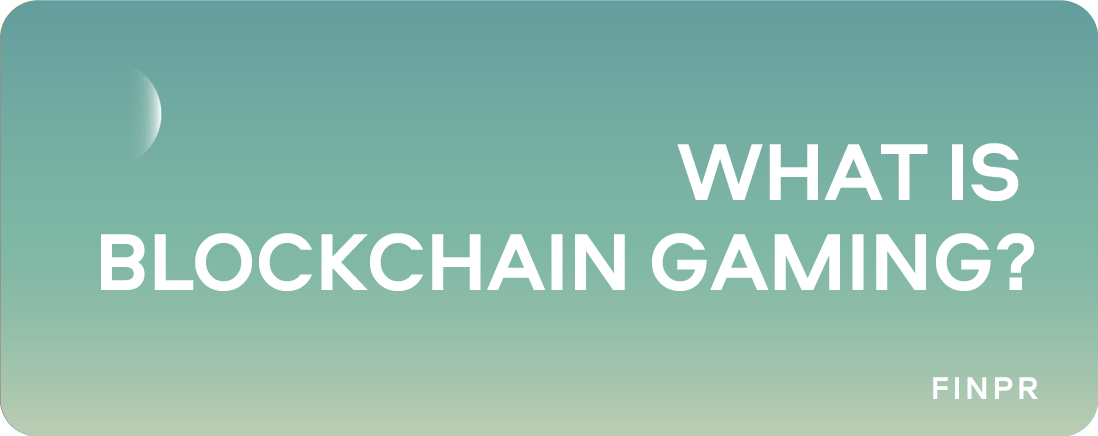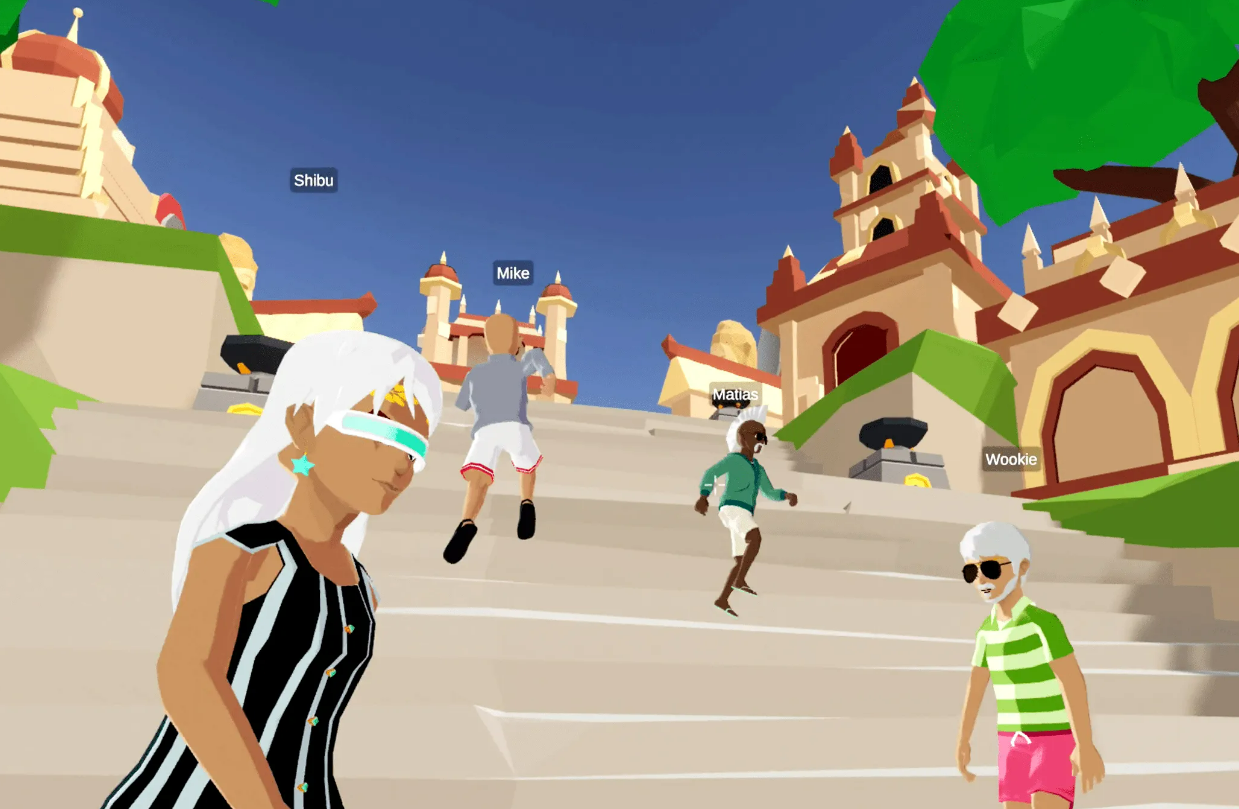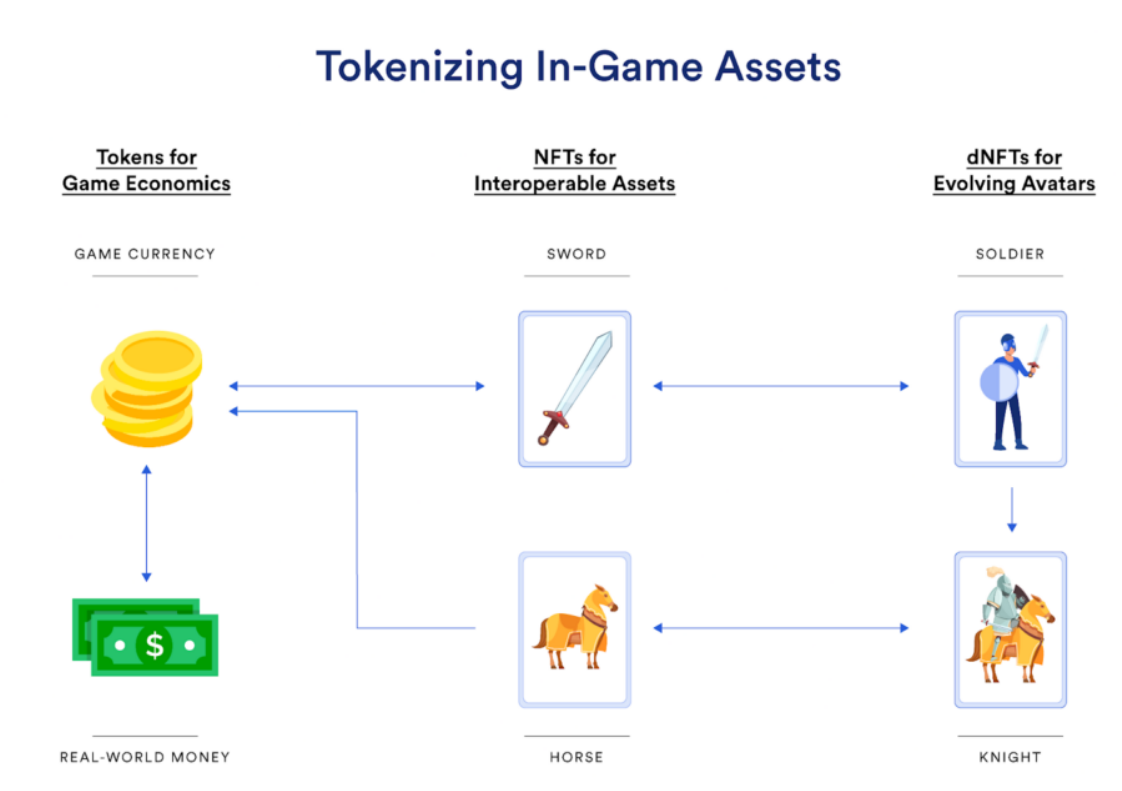
If you're into gaming, development, or investment, understanding blockchain gaming is essential. This article breaks down what blockchain gaming is, how it works, and its potential impact.
Whether you're a gamer looking for the latest trends or a tech enthusiast curious about blockchain, this article will give you the insights you need to appreciate the evolving world of blockchain gaming.
What is Blockchain?
Blockchain is a decentralized digital ledger technology that enables secure and transparent recording of transactions across a network of computers. At its core, a blockchain consists of a series of blocks, each containing a list of transactions. These blocks are linked together in a chronological order, forming a continuous chain. This structure ensures that once a transaction is recorded, it cannot be altered or deleted without consensus from the network, providing a high level of security and integrity.
How blockchain works:
- Transaction Initiation: A user initiates a transaction, which is then broadcast to the network.
- Validation: Nodes in the network validate the transaction using a consensus mechanism, such as Proof of Work (PoW) or Proof of Stake (PoS). This ensures that the transaction is legitimate and conforms to network rules.
- Block Formation: Once validated, the transaction is grouped with other transactions to form a new block.
- Block Addition: The new block is added to the existing blockchain, and the update is propagated across all nodes in the network.
- Finalization: The transaction is considered final and immutable once it is included in a block and added to the blockchain.
The first and most well-known application of blockchain technology is Bitcoin, a decentralized digital currency introduced in 2009 by an anonymous entity known as Satoshi Nakamoto. Bitcoin demonstrated the viability of blockchain as a secure and transparent ledger for financial transactions.
Following Bitcoin's success, numerous other cryptocurrencies, such as Ethereum, Ripple, and Litecoin, have emerged, each utilizing blockchain technology to facilitate peer-to-peer transactions without intermediaries.
Introduction to Blockchain in Gaming
The integration of blockchain technology into the gaming industry began with a handful of pioneering projects that demonstrated the potential for decentralization, transparency, and true ownership of in-game assets. These early adopters laid the groundwork for what has become a rapidly growing sector within the gaming world:
- CryptoKitties: Launched in 2017, CryptoKitties is one of the first blockchain-based games to gain widespread attention. Players could buy, sell, and breed virtual cats, each represented by a unique non-fungible token (NFT) on the Ethereum blockchain. The game's success highlighted the potential for blockchain to create digital scarcity and true ownership of virtual items.
- Decentraland: Decentraland, a virtual reality platform built on the Ethereum blockchain, allows users to purchase, develop, and trade virtual land parcels as NFTs. This project demonstrated how blockchain could enable user-generated content and economies within virtual worlds, paving the way for more complex and immersive blockchain games.

Comparison with Traditional Gaming Platforms
To understand the significance of blockchain gaming, it's essential to compare it with traditional gaming platforms, which have dominated the industry for decades.
Centralization vs. Decentralization
Traditional games operate on centralized servers controlled by game developers or publishers. This centralization gives developers full control over in-game assets, economies, and player interactions. In contrast, blockchain games operate on decentralized networks, where players have ownership and control over their assets, and game rules are enforced by smart contracts rather than centralized authorities.
Ownership and Scarcity
In traditional gaming, players can purchase in-game items, but they do not own them in the true sense. Their ownership is limited to the confines of the game's ecosystem and can be revoked or altered by the developers. Blockchain gaming introduces the concept of true ownership through NFTs, which represent unique, verifiable assets on the blockchain. Players can buy, sell, and trade these assets outside the game environment, creating real-world value.
Security and Transparency
Blockchain technology enhances security and transparency in gaming. In traditional games, players rely on developers to ensure fair play and secure transactions, but these systems can be vulnerable to hacks and fraud. Blockchain's decentralized and transparent nature ensures that all transactions and game rules are immutable and verifiable by all participants, reducing the risk of cheating and fraud.
Key Innovations in Blockchain Gaming
Smart Contracts
Smart contracts are self-executing contracts with the terms of the agreement directly written into code. In blockchain gaming, smart contracts automate complex game mechanics, ensuring fair and transparent interactions without the need for intermediaries. They can manage everything from in-game transactions to tournament payouts, providing a seamless and secure gaming experience.
Non-Fungible Tokens (NFTs)
NFTs are unique digital assets that represent ownership of a specific item or piece of content on the blockchain. In gaming, NFTs can be used to represent in-game items, characters, virtual real estate, and more. Their uniqueness and verifiability enable new gameplay possibilities, such as provable rarity, player-driven economies, and cross-game asset compatibility. With an NFT marketing campaign, a project can significantly increase its visibility.
Decentralized Applications (DApps)
Decentralized applications (DApps) run on blockchain networks and utilize smart contracts to provide various services. In the context of gaming, DApps can host entire games or specific game features, such as marketplaces or governance systems. This decentralized approach ensures that games are more resilient to censorship and manipulation, empowering players with more control over their gaming experiences.
How Blockchain Gaming Works
Game Development on Blockchain
Developing games on the blockchain requires specialized tools and platforms that support blockchain integration. Some of the most popular platforms for blockchain game development include:
- Ethereum: Known for its robust smart contract capabilities, Ethereum is a popular choice for blockchain games. Developers use Solidity, a programming language for writing smart contracts, to create their games.
- EOS: EOS provides high performance and scalability, making it suitable for complex games with numerous transactions.
- TRON: TRON focuses on high throughput and low transaction costs, which are advantageous for game developers looking to minimize fees and latency.
Developers create in-game assets as NFTs, ensuring that each item is unique and owned by the player.
- Minting NFTs: The process of creating NFTs is known as minting. Developers can mint NFTs for various in-game items, which players can then buy, sell, or trade.
- Asset Integration: Once minted, NFTs are integrated into the game, allowing players to use and interact with these assets within the game environment.
Gameplay Mechanics and Features
One of the most significant shifts in blockchain gaming is the transfer of ownership and control from developers to players.
- Asset Ownership: Players own their in-game assets as NFTs, meaning they can trade, sell, or keep these assets outside of the game environment.
- Decentralized Marketplaces: Blockchain games often feature decentralized marketplaces where players can trade NFTs securely and transparently without intermediaries.

Blockchain gaming introduces the possibility of interoperability, where assets from one game can be used in another.
- Cross-Game Assets: NFTs can be designed to be compatible with multiple games, allowing players to use their assets across different gaming experiences.
- Shared Economies: Interoperable assets can create shared economies between games, enhancing the value and utility of player-owned items.
Blockchain ensures that all transactions within the game are secure and transparent.
- Immutable Records: Every transaction is recorded on the blockchain, creating an immutable ledger that players can trust.
- Reduced Fraud: The transparency and security of blockchain transactions reduce the risk of fraud and cheating, creating a fairer gaming environment.
Limitations
Technical Barriers
One of the most significant technical barriers facing blockchain gaming is scalability. As the number of transactions and participants in a game increases, so does the demand on the blockchain network.
- Network Congestion: Popular blockchain networks like Ethereum can experience congestion, leading to slower transaction times and higher fees. This can be particularly problematic for games requiring real-time interactions and frequent transactions.
- Limited Throughput: Most current blockchain platforms can handle only a limited number of transactions per second (TPS). This limitation can hinder the performance and responsiveness of blockchain games, especially those with large user bases.
Expert companies can help you understand all the nuances and complexities of blockchain gaming.
Transaction fees, also known as gas fees on networks like Ethereum, are another significant barrier.
- Costly Transactions: High fees can make it expensive for players to perform basic in-game actions, such as buying or trading items. This can deter users from engaging with the game and limit the overall user experience.
- Variable Fees: Transaction fees can fluctuate based on network demand, making it difficult for players and developers to predict and manage costs.
Developing blockchain games requires a specialized skill set and a deep understanding of both blockchain technology and game development.
- Steep Learning Curve: Developers must learn new programming languages (e.g., Solidity for Ethereum) and understand blockchain concepts, which can be time-consuming and challenging.
- Integration Challenges: Integrating blockchain elements with traditional game engines and platforms can be complex, requiring extensive testing and optimization to ensure smooth functionality.
User Adoption
Blockchain gaming introduces several new concepts and processes that can be daunting for players unfamiliar with blockchain technology.
- Understanding Blockchain Basics: Players need to grasp the basics of blockchain, including how wallets, private keys, and NFTs work. This can be a significant barrier to entry for those who are not tech-savvy.
- Setting Up Digital Wallets: To participate in blockchain games, players must set up and manage digital wallets. This process can be confusing and intimidating for new users, who must ensure the security of their private keys and navigate the intricacies of wallet software.
The reliance on digital wallets and cryptocurrencies adds another layer of complexity for users.
- Cryptocurrency Management: Players must acquire and manage cryptocurrencies to interact with blockchain games. This includes understanding how to buy, store, and use cryptocurrencies, which can be a hurdle for those new to the space.
- Security Concerns: Managing digital assets securely is crucial, as losing access to a digital wallet or falling victim to phishing attacks can result in the loss of valuable in-game assets.
Regulatory and Legal Concerns
Blockchain gaming operates in a regulatory gray area in many jurisdictions, leading to uncertainties and potential legal challenges. The legal status of digital assets, cryptocurrencies, and blockchain transactions can vary widely between countries. Developers and players must navigate these complex legal landscapes, which can be a significant barrier to adoption.
Ensuring compliance with local and international laws, such as anti-money laundering (AML) and know-your-customer (KYC) regulations, can be challenging and resource-intensive for developers.
Moreover, the nature of blockchain gaming, particularly when involving in-game assets with real-world value, can raise legal and ethical concerns.
Key Points
Blockchain gaming represents a transformative shift in the gaming industry, offering players unprecedented control, ownership, and transparency. By leveraging blockchain technology, games can provide secure, decentralized, and immutable environments where players truly own their in-game assets, and transactions are transparent and fair. This innovation opens up new possibilities for gameplay, player-driven economies, and monetization opportunities, setting the stage for a new era in gaming.
However, blockchain gaming also faces significant challenges and limitations. Despite the challenges, the potential for blockchain gaming to revolutionize the industry is immense.
By understanding the intricacies of blockchain technology and addressing the challenges it presents, the gaming industry can unlock new levels of creativity, engagement, and value. The future of blockchain gaming is bright, and those who explore and innovate within this space will be at the forefront of this exciting transformation.




